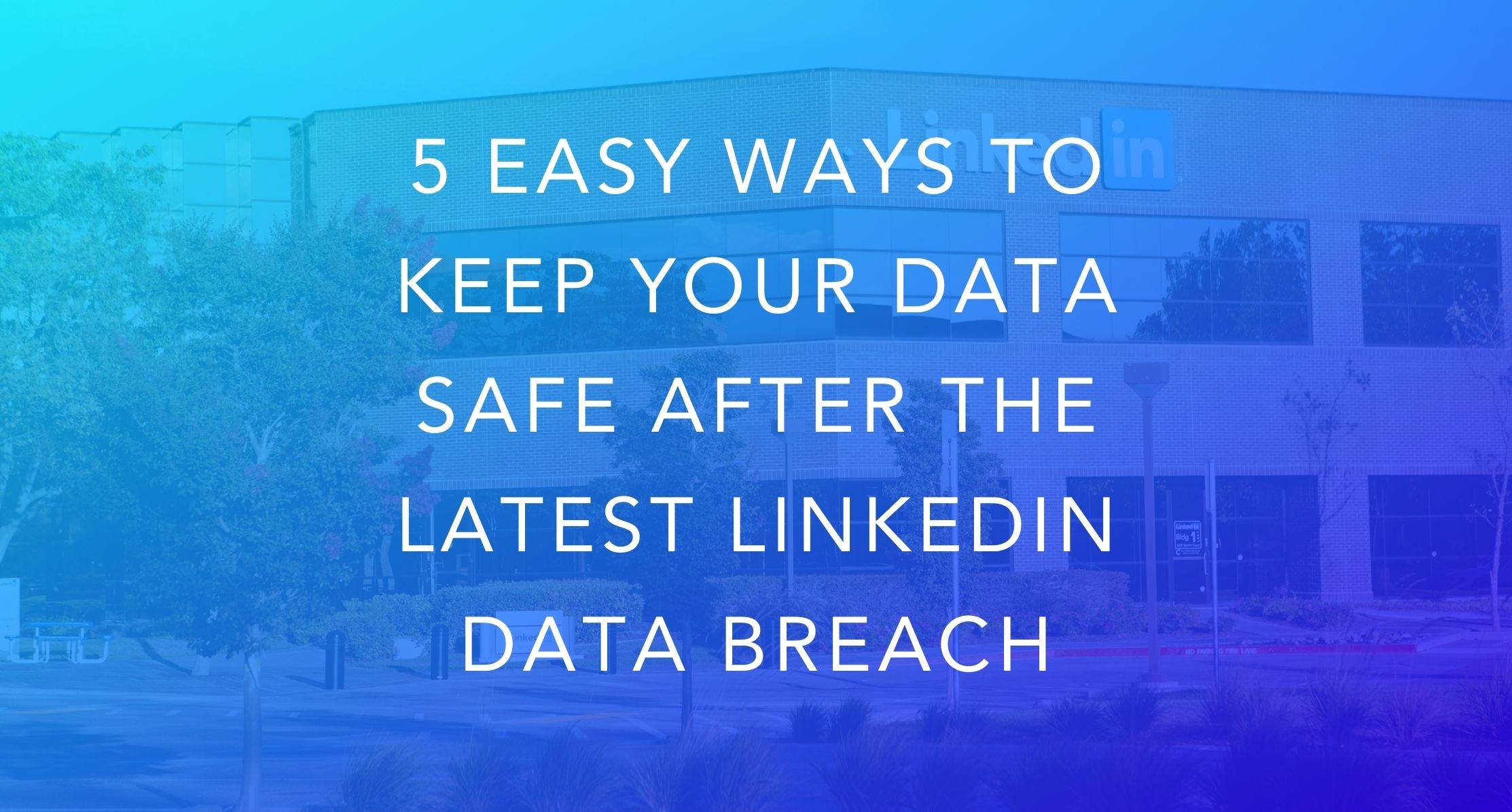Another day on the ol’ interwebz, another cyber data breach. This time the culprit is LinkedIn (again – oops!)
So, what happened exactly? Basically, hackers got in, scraped the personal data of 700 million people (over 80% of users) to potentially resell on the dark web. Fun times…not.
Before you freak out and burn your laptop: your password is safe (although hey, it never hurts to reset yours with something ultra-secure!) And so is any financial and credit card info.
BUT. These are still serious shenanigans. Because that stolen data is all super-valuable stuff. We’re talking names, phone numbers, addresses, email addresses, personal and professional data like job roles, and the details of your social media handles and accounts.
That’s the kind of stuff that could be used to bypass account authorization protections, set up fraudulent accounts in your name, or to target contacts or connections with ultra-convincing phishing efforts.
Eeeeek.
What’s a LinkedIn user to do? These five things, that’s what!
1. Scrutinize your online profiles.
Now’s a good time to check how much info you’re sharing online. Are you using a home address when you could be using a PO Box, or your personal email when a form could do the trick? Are your old email addresses or phone numbers out there? Have you shared key “secret question” info like your first school, first pet, or birth city in a recent social media post? Delete potentially iffy info, balance access and privacy when sharing contact details, and do a “gut check” before sharing.
2. Set up credit checks and alerts.
Most credit cards and banks offer credit activity alerting (often for free – yay!) that pings you when a request for credit or new account activity happens in your name. Opt in so you’re alerted right away if something fishy (or phishy…see what we did there ;-)) is happening.
3. Limit your data sharing.
Most social media platforms and apps have options to limit what info you share with them. The less info you share, the less there is to scrape! Go into your user settings online or on your phone and turn off location tracking, data sharing and reporting, camera and microphone access, and anything else you’re not comfortable with.
4. Turn on two-factor authentication.
Two-factor isn’t foolproof, but it’s an extra layer of protection. Turn it on when accessing any websites that involve important personal or financial data so that you can confirm any log in attempt is actually coming from you. Ahem, same goes for your social media accounts too, btw. See what I mean…
5. Use a password manager.
Passwords and credit card data weren’t leaked this time, but it pays to be proactive! If you’re guilty of using “password1234” across all your accounts, it’s time to change things up. Google Chrome and programs like Last Password suggest unique, near-impossible-to-crack passwords for each website, then save them for you. You access them using your admin password, so you’ve only got to keep one password in your head – the programs do the rest! Fellow, social media managers – these are also amazing tools for handling a ton of accounts and keeping them safe and sound at the same time!
Give these five tips a try, and you’ll be in good shape if and when the next data breach happens!

